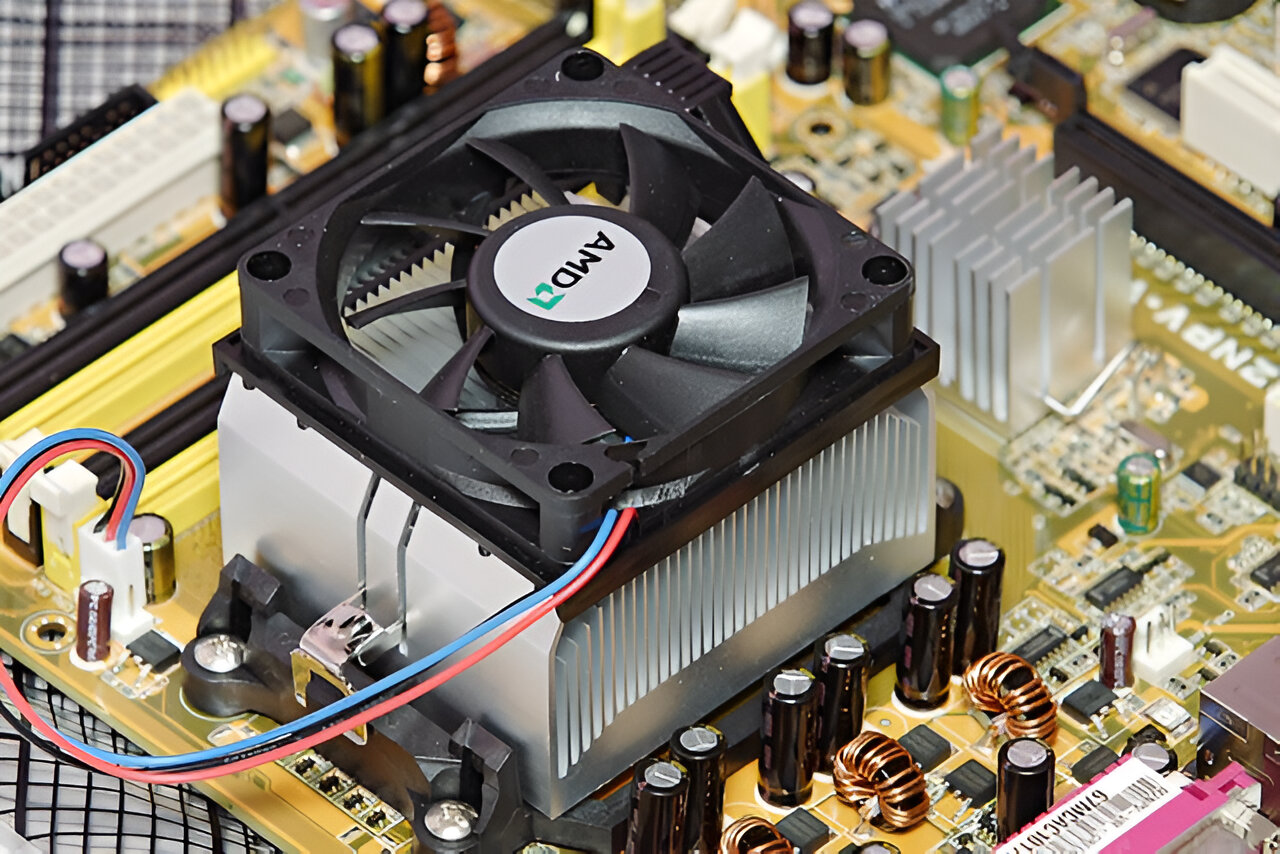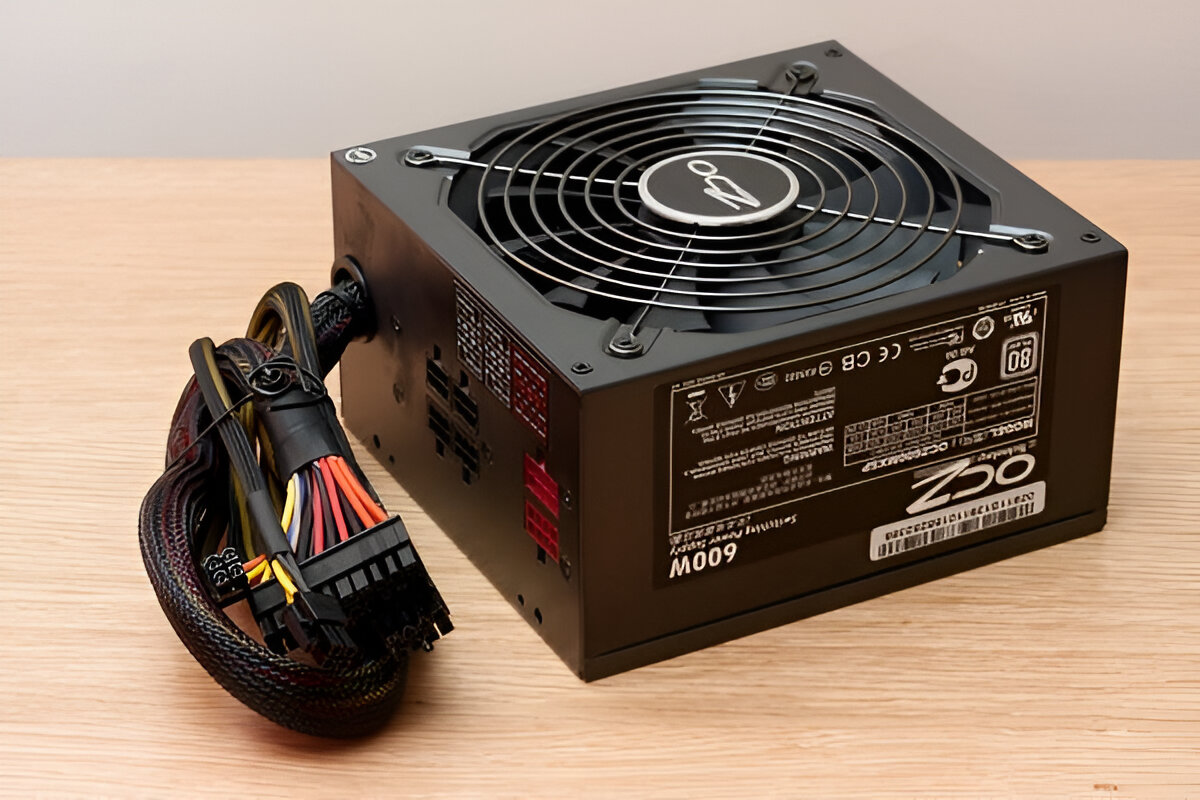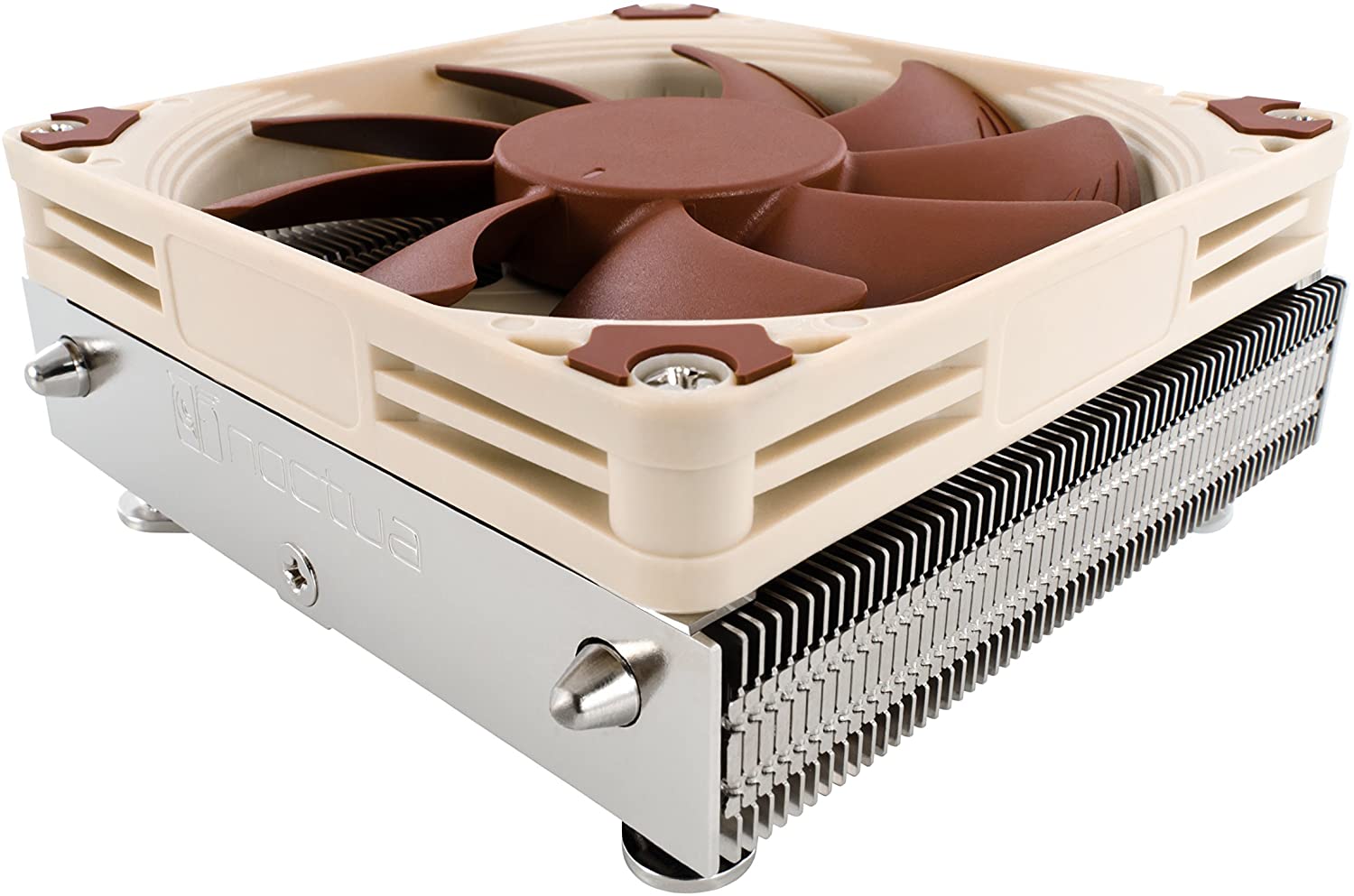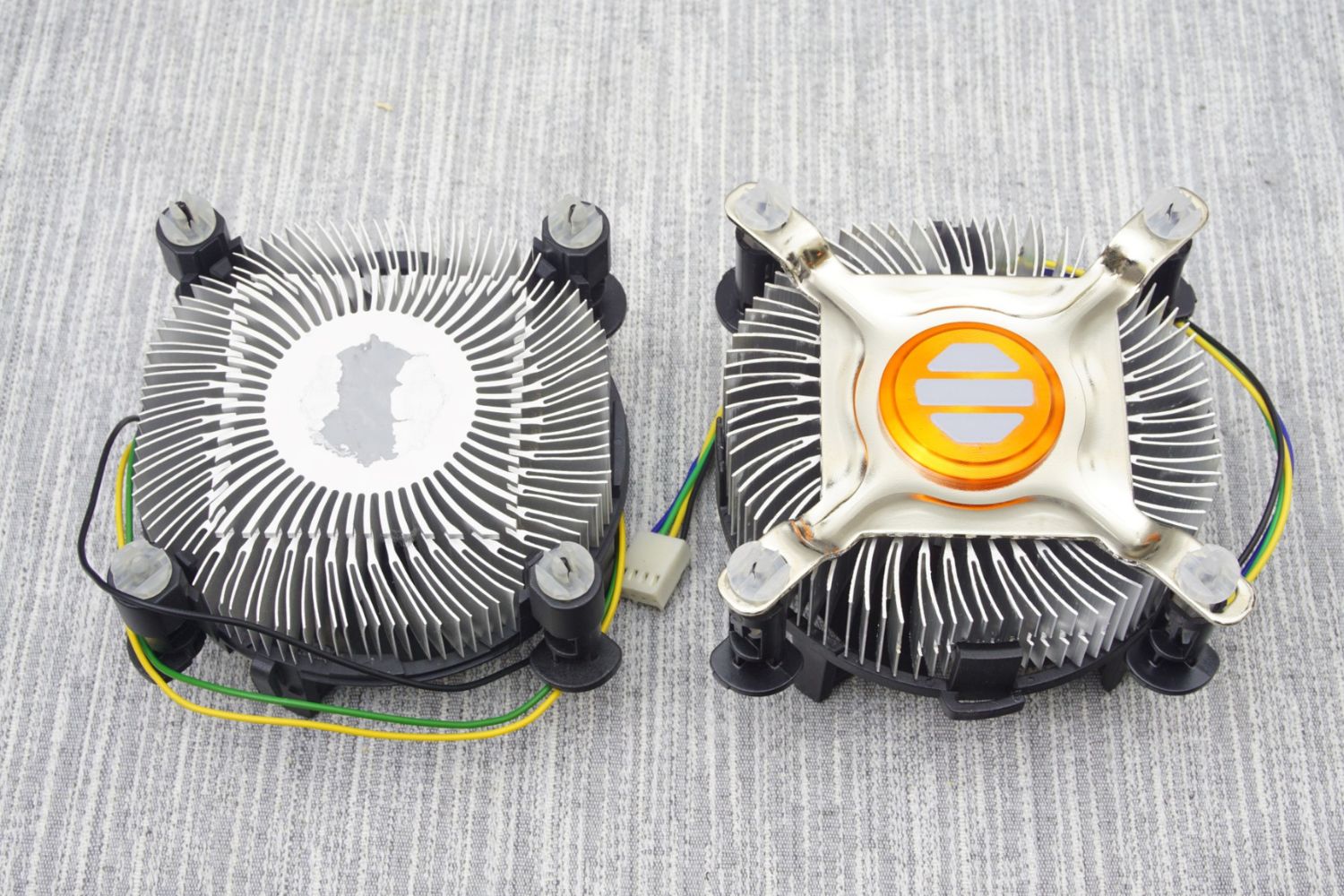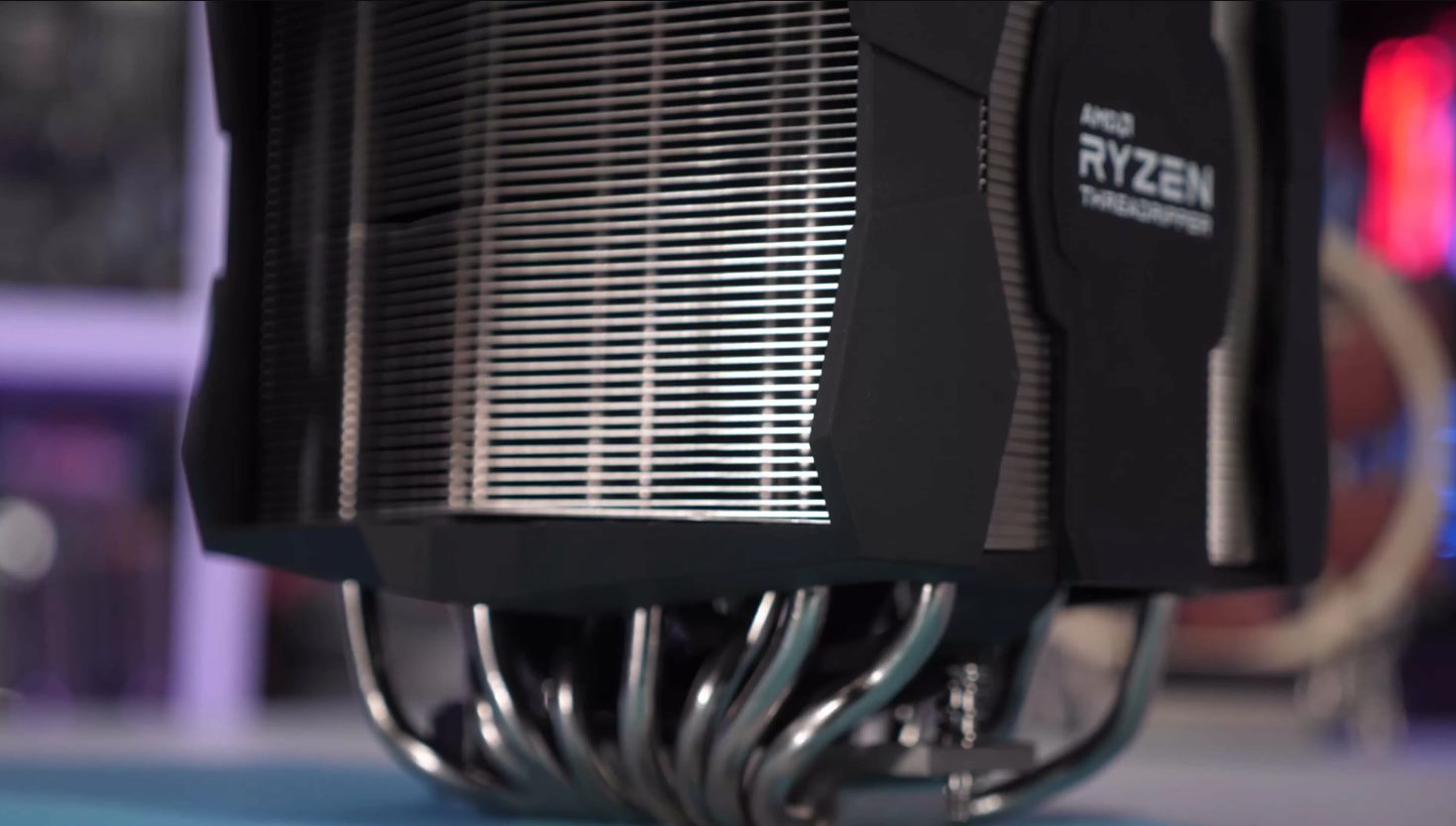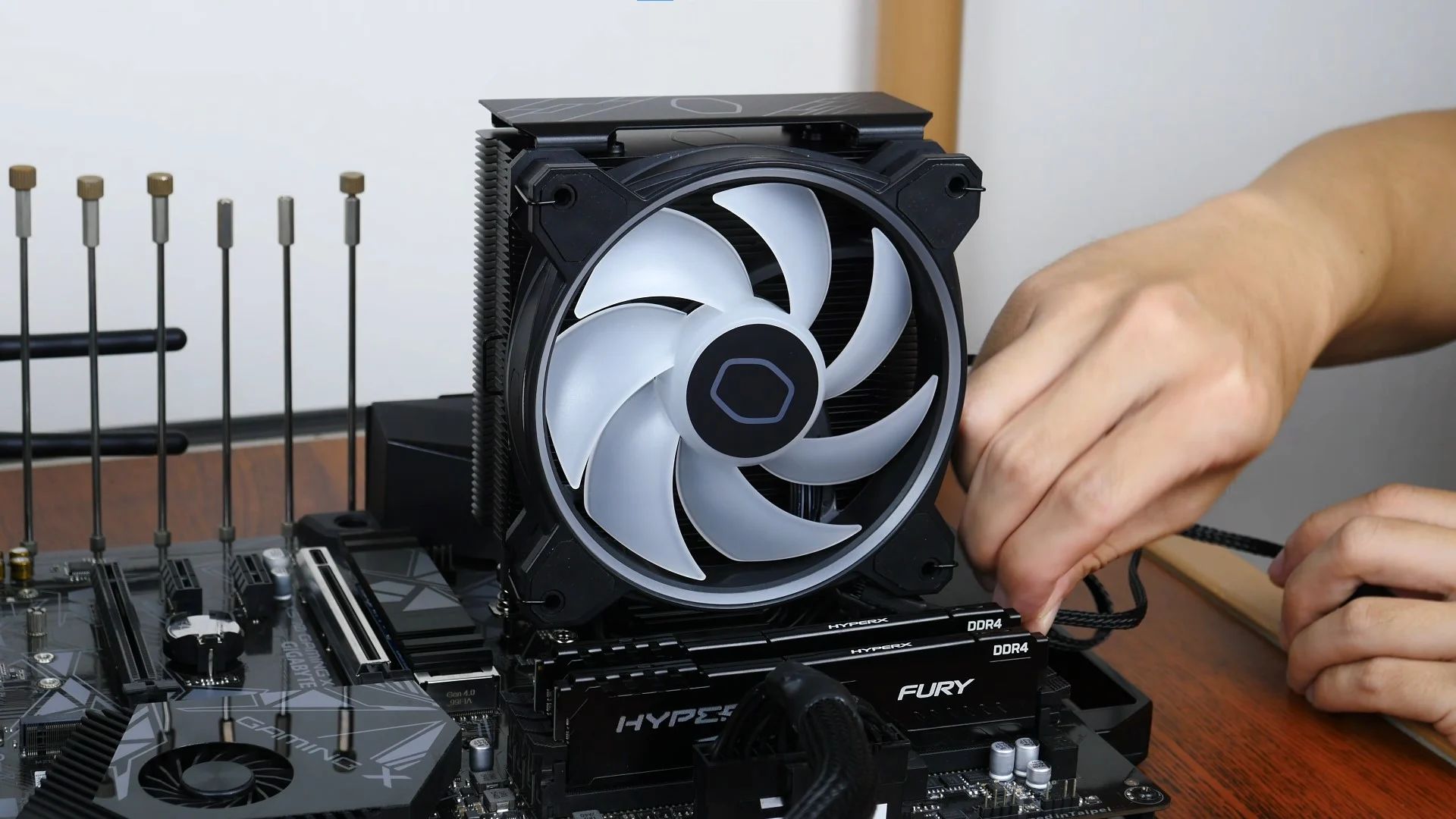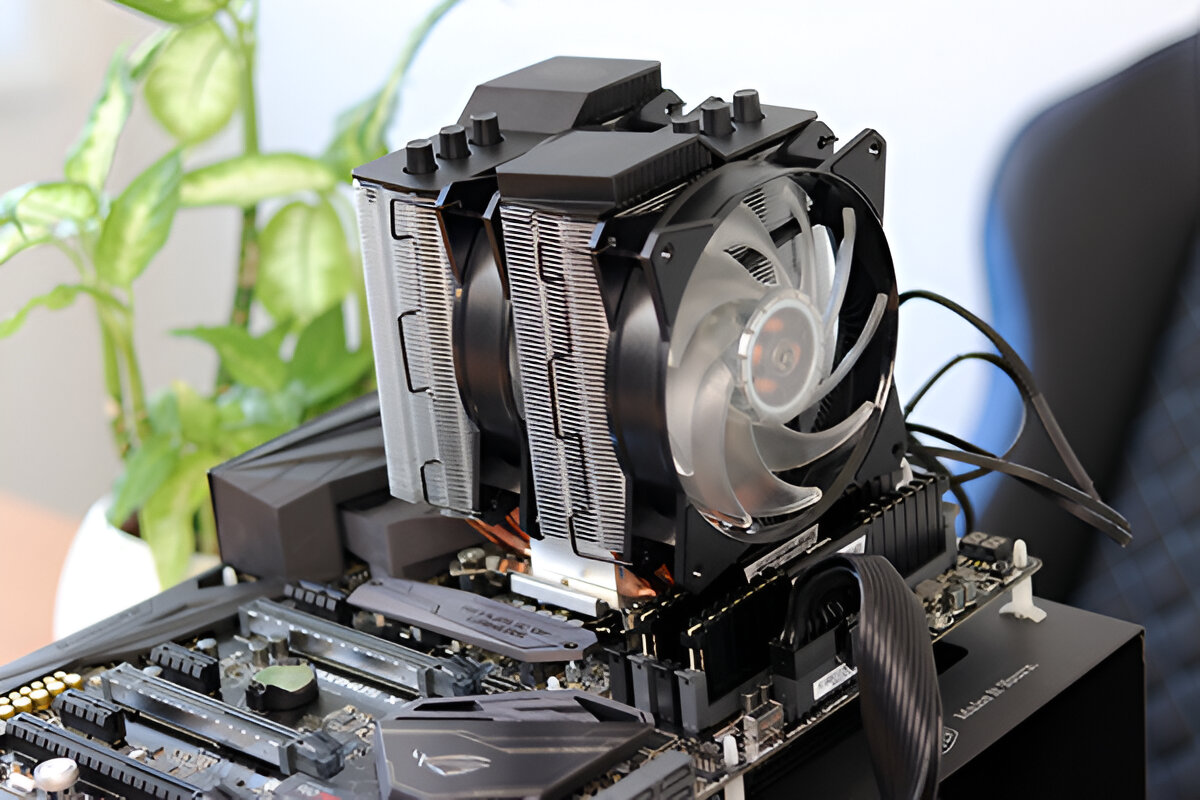Introduction
A central processing unit (CPU) cooler is an essential component of a computer system that helps regulate the temperature of the CPU. As CPUs have become more powerful and generate more heat, proper cooling has become increasingly important to ensure optimal performance and prevent damage to the CPU.
In this article, we will explore where a CPU cooler plugs into on a motherboard and discuss the different types of CPU coolers available. Whether you are building a new computer or upgrading an existing one, understanding how CPU coolers connect to your motherboard is crucial for maintaining a cool and reliable system.
But before we delve into the details, let’s take a quick look at the key components of a motherboard and how they relate to the CPU cooler.
Motherboard Components
The motherboard is the main circuit board of a computer system, housing various components and connectors that facilitate communication between them. It serves as the foundation for all other hardware components, including the CPU cooler.
Some important components on a motherboard that are relevant to the CPU cooler include:
- CPU Socket: The CPU socket is a specific slot on the motherboard where the CPU is installed. The type and compatibility of the socket determine the compatibility of the CPU cooler.
- VRM (Voltage Regulator Module): The VRM is responsible for regulating the power supplied to the CPU. It can also generate some heat, necessitating proper cooling.
- Chipset: The chipset is a collection of integrated circuits that control various functions of the motherboard, including communication between the CPU and other peripherals. It may also require cooling.
- RAM Slots: Random Access Memory (RAM) modules are inserted into these slots. While the CPU cooler does not directly connect to the RAM, its size and height should be considered to ensure compatibility and clearance.
- Expansion Slots: These slots allow for additional cards, such as graphics and sound cards, to be inserted into the motherboard. They do not directly affect the CPU cooler placement.
Now that we have an understanding of the motherboard components, let’s explore the various types of CPU coolers commonly used in computer systems.
Motherboard Components
A motherboard is a critical component in any computer system, as it acts as a hub for various hardware components, including the CPU cooler. Understanding the key components of a motherboard is essential for understanding where the CPU cooler plugs into.
Here are some of the important components on a motherboard:
- CPU Socket: The CPU socket is a slot on the motherboard where the CPU is installed. It provides the interface between the CPU and the motherboard, allowing for communication and power supply. The type and compatibility of the CPU socket determine the type of CPU cooler that can be used.
- VRM (Voltage Regulator Module): The VRM is responsible for regulating the voltage supplied to the CPU. It converts the power from the power supply to a level suitable for the CPU. The VRM can generate some heat, so it may require additional cooling.
- Chipset: The chipset is a collection of integrated circuits that control various functions of the motherboard. It manages data flow between the CPU, memory, storage devices, and other peripherals. The chipset may also require cooling, depending on its power consumption and the motherboard’s design.
- RAM Slots: Random Access Memory (RAM) modules are inserted into these slots. While the CPU cooler does not directly connect to the RAM, the height and size of the CPU cooler should be considered to ensure compatibility and clearance with the RAM modules.
- Expansion Slots: These slots allow for additional cards, such as graphics cards, sound cards, and network cards, to be connected to the motherboard. The CPU cooler does not directly plug into the expansion slots, but their positioning and size can impact the placement of the CPU cooler.
While the CPU cooler does not directly connect to all of these components, they play a crucial role in determining the physical placement and compatibility of the CPU cooler on the motherboard.
Understanding the layout and specifications of your motherboard is essential when selecting a CPU cooler. Make sure to consult the motherboard manual and check the compatibility of the CPU cooler with the specific socket type and any potential clearance issues with other components.
Now that we have explored the motherboard components related to the CPU cooler, let’s move on to discussing the different types of CPU coolers available in the market.
CPU Cooler
A CPU cooler is a vital component in any computer system, designed to dissipate the heat generated by the central processing unit (CPU). The CPU cooler consists of a heat sink and a fan, which work together to prevent the CPU from overheating and ensure optimal performance.
The main function of a CPU cooler is to absorb the heat generated by the CPU and transfer it away. This is achieved through the heat sink, which is a metal structure composed of fins that provide a larger surface area for heat dissipation. The fan, attached to the heat sink, helps to increase airflow and enhance the cooling efficiency.
CPU coolers come in various sizes, shapes, and configurations to accommodate different types of CPUs and system requirements. The choice of CPU cooler depends on factors such as CPU power and heat output, available space inside the computer case, and personal preferences.
There are two main types of CPU coolers:
- Air Cooler: An air cooler, also known as an air heatsink, is the most common and traditional type of CPU cooler. It consists of a metal heatsink with heatpipes embedded in it, which draw heat away from the CPU. The heat is then dissipated through the fins of the heatsink by the airflow created by the fan. Air coolers are generally affordable, reliable, and easy to install.
- Liquid Cooler: A liquid cooler, also known as a liquid cooling system or all-in-one (AIO) cooler, uses a closed-loop system to cool the CPU. It consists of a pump, a radiator, liquid coolant, and a fan. The pump circulates the coolant through the system, absorbing heat from the CPU, and then dissipating it through the radiator with the help of the fan. Liquid coolers are known for their superior cooling performance, especially for high-end CPUs and overclocking, but they tend to be more expensive and require more complex installation.
When choosing a CPU cooler, it is crucial to consider factors such as CPU compatibility, cooling performance, noise level, and budget. It is also important to ensure that the CPU cooler is properly installed and securely connected to the motherboard to maximize its effectiveness.
Next, let’s take a closer look at the different types of CPU coolers and their installation methods.
CPU Cooler Types
When it comes to cooling your CPU, you have a wide variety of options to choose from. The right CPU cooler type for you will depend on your specific needs, budget, and the level of cooling performance you require. Let’s explore the two main types of CPU coolers in more detail:
Air Cooler:
An air cooler, also known as an air heatsink, is the more traditional and commonly used type of CPU cooler. It consists of a metal heatsink with heatpipes embedded in it, which draw heat away from the CPU. The heat is then dissipated through the fins of the heatsink with the help of a fan.
Air coolers are known for their reliability, simplicity, and cost-effectiveness. They come in various sizes, from compact low-profile models to larger tower-style coolers. Tower-style air coolers typically offer better heat dissipation due to their larger surface area and multiple heatpipes.
Installation of air coolers is relatively straightforward. The heatsink is attached to the CPU socket using mounting brackets, and the fan is secured on top of the heatsink. Most modern air coolers use a universal mounting system that is compatible with a wide range of CPU sockets.
Liquid Cooler:
A liquid cooler, also known as a liquid cooling system or all-in-one (AIO) cooler, provides superior cooling performance compared to air coolers. It uses a closed-loop system that circulates a liquid coolant to cool the CPU.
A typical liquid cooler setup consists of a pump, a radiator, liquid coolant, and a fan. The pump circulates the coolant, absorbing heat from the CPU and transferring it to the radiator. The radiator then dissipates the heat with the help of the fan, resulting in efficient cooling.
Liquid coolers offer several advantages, such as better CPU temperature control, quieter operation, and the ability to handle high heat output. They are particularly popular among gamers, overclockers, and users with high-performance CPUs.
Installing a liquid cooler can be more complex than installing an air cooler, as it involves mounting the radiator and connecting the hoses. However, most AIO liquid coolers come with pre-filled coolant and pre-attached hoses, making the installation process relatively straightforward.
It’s important to note that liquid coolers require sufficient space for the radiator and fan setup, both inside the computer case and around the CPU socket.
In summary, air coolers are a reliable and cost-effective option for most users, while liquid coolers offer superior cooling performance for enthusiasts and users with higher cooling demands. When choosing a CPU cooler, consider factors such as your CPU’s cooling requirements, case compatibility, noise preferences, and budget.
Next, let’s discuss the placement of CPU coolers on the motherboard.
Air Cooler
When it comes to cooling your CPU, an air cooler is a popular and reliable option. An air cooler, also known as an air heatsink, utilizes a combination of metal heatsink and fan to dissipate the heat generated by the CPU.
The main component of an air cooler is the heatsink, which is typically made of aluminum or copper. The heatsink consists of multiple fins that increase the surface area for heat dissipation. Heatpipes, which are copper tubes filled with a heat-conductive fluid, are often integrated into the heatsink to enhance heat transfer from the CPU to the fins.
The fan is attached to the heatsink and helps to move the air across the fins, facilitating heat dissipation. The airflow created by the fan enhances the cooling effect by carrying away the heat absorbed by the heatsink. Some air coolers come with one fan, while others feature dual fans or even triple fans for increased cooling performance.
Air coolers are known for their simplicity, reliability, and cost-effectiveness. They offer efficient cooling for a wide range of CPUs, from entry-level to high-end processors. Air coolers come in different sizes and designs, such as low-profile coolers for compact builds and larger tower-style coolers for maximum heat dissipation.
Installation of an air cooler is relatively straightforward. The heatsink is placed on top of the CPU, and the mounting brackets secure it in place. The fan is then attached to the heatsink, usually using clips or screws. Most modern air coolers feature a universal mounting system that is compatible with various CPU sockets, making installation easier.
When choosing an air cooler, you should consider factors such as the TDP (thermal design power) of your CPU, the available space inside your computer case, and the noise level of the fan. Air coolers with larger heatsinks and more powerful fans tend to offer better cooling performance but can be louder.
It is essential to ensure that the chosen air cooler is compatible with your CPU socket type. Fortunately, many air coolers are designed to support multiple socket types, providing flexibility and ease of use.
In addition, consider the height of the air cooler when installing it in your computer case. Ensure that there is enough clearance between the cooler and other components, such as the RAM modules and GPU, to avoid any conflicts.
Overall, air coolers are a reliable and effective choice for keeping your CPU temperatures under control. They offer excellent cooling performance for most computer systems, whether you are a casual user or an avid gamer. With their affordability, ease of installation, and compatibility, air coolers continue to be a popular choice among PC enthusiasts.
Next, let’s explore the other type of CPU cooler: liquid coolers.
Liquid Cooler
When it comes to advanced cooling solutions for high-performance systems, liquid coolers, also known as liquid cooling systems or all-in-one (AIO) coolers, are often the top choice. Liquid coolers provide superior cooling performance and are particularly popular among gamers, overclockers, and users with high-end CPUs.
A liquid cooler consists of a closed-loop system that circulates a liquid coolant to remove heat from the CPU. The main components of a liquid cooler include a pump, a radiator, liquid coolant, and a fan.
The pump is responsible for circulating the liquid coolant, typically a mixture of water and additives, through the system. It absorbs the heat from the CPU before transferring it to the radiator for cooling.
The radiator is a heat exchanger equipped with multiple fins that dissipate the heat absorbed by the liquid coolant. It is usually mounted on the back or top panel of the computer case to maximize heat dissipation. A fan is attached to the radiator to increase airflow and boost cooling efficiency.
Liquid coolers offer advantages over air coolers in terms of temperature control, noise level, and handling high heat output. They excel at keeping the CPU temperatures significantly lower, which can enhance the system’s stability and longevity.
One of the key benefits of liquid coolers is their ability to handle high TDP (thermal design power) CPUs and overclocking. The increased cooling capacity allows enthusiasts and overclockers to push their systems to higher frequencies while maintaining reasonable temperatures.
Installation of a liquid cooler may be more complex than that of an air cooler, as it involves mounting the radiator and connecting the hoses. However, most AIO coolers come pre-filled with coolant and feature pre-attached hoses, making the installation process relatively user-friendly.
It is important to note that liquid coolers require adequate space for the radiator and fans, both inside the computer case and around the CPU socket. Before purchasing a liquid cooler, ensure that your case is compatible with the radiator size and fan configuration you plan to use.
When selecting a liquid cooler, consider factors such as radiator size, fan noise level, and the overall compatibility with your CPU socket. Larger radiators with more fans generally provide better cooling performance, but they may require more space and generate more noise.
With the increasing popularity of liquid coolers, manufacturers now offer a wide range of options to suit different needs and budgets. Whether you are a hardcore gamer, an enthusiast, or simply want the best cooling solution for your high-performance system, a liquid cooler can take your CPU temperatures to the next level.
Next, we will discuss the different headers on the motherboard where the CPU cooler plugs into.
CPU Cooler Placement
Proper placement of the CPU cooler is crucial for efficient cooling and optimal performance of your computer system. The placement depends on the type of CPU cooler you are using and the layout of your motherboard and computer case.
When installing an air cooler, the heatsink should be positioned directly on top of the CPU. The base of the cooler should make full contact with the CPU heat spreader to maximize heat transfer. Ensure that you apply an appropriate amount of thermal paste between the CPU and the heatsink to facilitate heat conduction.
For tower-style air coolers, it is important to consider the clearance inside your computer case. Make sure there is enough space between the cooler and other components, such as the RAM modules and GPU, to avoid any interference and airflow restrictions. Some towers coolers are designed to provide clearance for taller RAM modules by elevating the fan or providing adjustable fan heights.
For low-profile air coolers, generally used in small form factor cases, placement is crucial due to space limitations. These coolers are designed to be compact and have a smaller footprint, allowing them to fit into tight spaces. However, they may have limited cooling capacity compared to larger tower coolers due to smaller heatsink size and fan dimensions.
When it comes to liquid coolers, the placement involves the mounting of the radiator and the positioning of the pump and CPU block. Most liquid coolers come with pre-filled coolant and feature pre-attached hoses to simplify installation.
The radiator for a liquid cooler is typically mounted on the back or top panel of the computer case. The fans attached to the radiator should be positioned to pull cool air into the case or push hot air out, depending on the airflow configuration you prefer. Ensure that there is sufficient clearance around the radiator to allow for proper airflow and prevent any obstruction or heat buildup.
The pump and CPU block of the liquid cooler should be positioned in a way that allows for proper contact with the CPU heat spreader. The orientation of the pump can vary depending on the specific cooler model. Refer to the manufacturer’s instructions for the recommended placement to ensure optimal performance.
Overall, careful consideration of CPU cooler placement is necessary to achieve efficient cooling and ensure compatibility with other components in your system. Proper airflow and clearance play a significant role in maintaining low CPU temperatures and preventing thermal throttling. Take into account the specific requirements and dimensions of your chosen cooler, motherboard, and computer case to find the best placement for your CPU cooler.
In the next section, we will discuss the different headers on the motherboard where the CPU cooler plugs into.
CPU Fan Header
A CPU fan header, also known as a CPU fan connector, is a specific header on the motherboard designed to connect the CPU cooler fan. It provides power and control signals to the fan, allowing the motherboard to regulate its speed and ensure efficient cooling.
The CPU fan header is typically a 4-pin or 3-pin connector located near the CPU socket. The 4-pin connector is known as the PWM (Pulse Width Modulation) fan header, while the 3-pin connector is the DC (Direct Current) fan header. Both types of connectors can be used for connecting the CPU cooler fan, but the PWM header offers more advanced control and flexibility.
The main function of the CPU fan header is to provide power and control signals to the fan. The motherboard sends voltage or PWM signals to the fan depending on the desired speed and cooling requirements. This allows the fan’s speed to be adjusted dynamically based on the CPU temperature, ensuring optimal cooling performance while reducing noise when the CPU is not under heavy load.
It is important to note that the CPU fan header is specifically designed for connecting the CPU cooler fan. Other case fans or additional fans connected to the motherboard are typically attached to other fan headers, such as system fan headers or chassis fan headers, which we will discuss later.
When connecting the CPU cooler fan to the CPU fan header, make sure to align the pins correctly. The connector is usually keyed to prevent incorrect insertion. Gently push the connector onto the header until it is fully seated and secure. Avoid using excessive force to prevent damage to the connector or header pins.
In the BIOS or UEFI settings of the motherboard, you can usually find options to adjust the fan speed and set fan profiles. This allows you to customize the cooling performance and noise level of the CPU cooler fan according to your preferences.
If your CPU cooler uses multiple fans or has additional features like RGB lighting, it may require additional connectors. Some motherboards offer dedicated headers for additional CPU cooler fans or lighting control, so make sure to consult the motherboard manual for specific connections and compatibility.
The CPU fan header is a vital component in ensuring effective cooling for your CPU. By connecting your CPU cooler fan to the CPU fan header and configuring the settings appropriately, you can maintain optimal CPU temperatures and performance while keeping noise levels in check.
Next, we will discuss another header on the motherboard specifically optimized for CPU cooling.
CPU Optimized Header
A CPU optimized header, also referred to as a CPU_OPT header or a CPU optional header, is a specialized fan header on the motherboard that is specifically designed to provide enhanced control and power delivery for CPU cooling. It offers additional features and functionalities compared to a standard CPU fan header.
The CPU optimized header is usually a 4-pin connector and is located near the CPU socket, much like the regular CPU fan header. However, it provides more advanced capabilities, such as increased fan speed control, higher power delivery, and better monitoring options.
One of the key features of the CPU optimized header is its ability to deliver higher power output to the connected CPU cooling device. This allows for more efficient cooling of high-performance CPUs or when using more demanding cooling solutions, such as liquid coolers with multiple fans or advanced air coolers.
In addition to higher power delivery, the CPU optimized header often offers more precise fan speed control. It can automatically adjust the fan speed based on the CPU temperature, ensuring optimal cooling performance and noise reduction. This level of control can be especially beneficial for overclockers or enthusiasts seeking maximum cooling for their CPUs.
Furthermore, the CPU optimized header often comes with additional monitoring features, allowing you to check the fan speed and the CPU temperature in real-time. Some motherboards even provide dedicated software or BIOS options to monitor and customize the CPU cooling settings for the connected device.
When connecting a CPU cooling device to the CPU optimized header, it is important to ensure compatibility. Check the specifications and instructions provided by the motherboard manufacturer to determine if your specific cooling solution supports the CPU optimized header. Some cooling devices may require a specific type of connector or additional adapters to connect to this header.
By utilizing the CPU optimized header, you can take advantage of the advanced control and power delivery features to achieve optimal cooling performance for your CPU. This can be particularly beneficial for users who require heavy CPU workload or engage in overclocking activities.
It is worth noting that not all motherboards include a separate CPU optimized header. In some cases, the motherboard may have multiple regular CPU fan headers that can be used for similar purposes. Consult the motherboard documentation or manufacturer’s website to determine the specifics of your motherboard’s fan headers and their functionalities.
Now that we have explored the CPU optimized header, let’s move on to discussing the other fan headers on the motherboard used for general system cooling.
System Fan Headers
In addition to the CPU fan header and CPU optimized header, most motherboards come equipped with multiple system fan headers. These headers are designed to connect and control the case fans or other fans within the computer system, contributing to overall system cooling.
System fan headers, often referred to as chassis fan headers or case fan headers, are typically 4-pin or 3-pin connectors located near the edges of the motherboard. They provide power and control signals to the case fans, allowing the motherboard to adjust their speed based on temperature requirements or user-defined settings.
The 4-pin system fan header is the more common type and offers pulse width modulation (PWM) control, enabling precise fan speed adjustment. The 3-pin header, on the other hand, uses direct current (DC) control and provides basic fan speed control options.
The number of system fan headers may vary depending on the motherboard model and form factor. Some motherboards offer two or more headers, allowing for easy connection and control of multiple case fans. These headers may be labeled SYS_FAN, CHA_FAN, or similar names, depending on the motherboard manufacturer.
Connecting case fans to system fan headers provides crucial airflow management within the computer case. By carefully positioning and configuring the fans, you can direct cool air to critical components, such as the CPU, GPU, and storage devices, while expelling hot air from the case.
When connecting case fans to system fan headers, ensure that you align the pins correctly and securely attach the connectors. Like with the CPU fan header, it’s important to avoid applying excessive force or bending the pins.
In the BIOS or UEFI settings, you can typically find options to monitor and adjust the speed of the case fans. Most motherboards offer predefined fan profiles or manual control options, allowing you to choose between quiet operation or maximum cooling performance.
Having multiple system fan headers gives you the flexibility to connect and manage additional fans within your system. This is particularly useful when building a custom or high-performance PC, as it allows for dedicated cooling for different components or areas of the case.
However, it’s important to note that the power output and control capabilities of the system fan headers may vary. Some headers may offer higher power limits or more advanced control options, while others may have more limited functionality. Be sure to consult your motherboard manual for specific details.
In summary, system fan headers play a crucial role in managing the cooling performance of your computer system. By connecting case fans to these headers and configuring their speed and operation, you can maintain optimal temperatures and ensure the longevity and stability of your hardware components.
Now, let’s conclude the article.
Conclusion
Properly understanding the placement and connection of a CPU cooler is essential for maintaining the temperature and performance of your computer system. By knowing where a CPU cooler plugs into the motherboard and the different types of CPU coolers available, you can make informed decisions when building or upgrading your PC.
The motherboard components, such as the CPU socket, VRM, chipset, RAM slots, and expansion slots, all play a role in determining the placement and compatibility of the CPU cooler. With this knowledge, you can ensure that the CPU cooler fits properly and does not interfere with other components.
Air coolers and liquid coolers are the two main types of CPU coolers available. Air coolers, consisting of a heatsink and fan, are reliable and cost-effective options for most users. On the other hand, liquid coolers, which circulate liquid coolant through a closed-loop system, offer superior cooling performance and are popular among enthusiasts and overclockers.
When it comes to installation, air coolers require careful positioning to ensure sufficient clearance and airflow. Liquid coolers, although more complex to install, offer advantages in overclocking and high-performance scenarios.
The CPU fan header and CPU optimized header provide power and control for the CPU cooler fan, ensuring efficient cooling based on temperature fluctuations. Meanwhile, system fan headers are used for connecting and controlling case fans, contributing to overall system airflow and cooling.
In conclusion, proper CPU cooler placement and connection are vital for maintaining optimal temperatures and maximizing the performance of your computer system. By understanding the motherboard components, CPU cooler types, and fan headers, you can make informed decisions when choosing, installing, and configuring your CPU cooler, ensuring a cool and reliable system.







